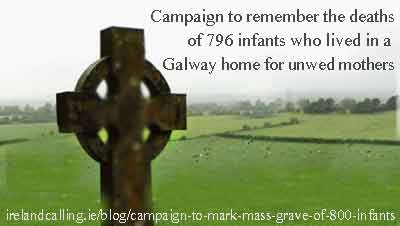The Catholic Church is considering whether to erect a memorial at a recently discovered mass grave of almost 800 children.
The Irish government could also launch an inquiry to determine the truth behind the burial site.

The mass grave in Tuam in Galway is on a site that used to be a home for unwed mothers in from the 1920s to the 1960s. Many children would have died of illness or malnutrition because of the tough conditions at the time.
Locally it had been thought that the area had been a grave yard for unbaptised babies and famine victims but no one realised there were so many bodies buried there.
Two children who were playing in the area discovered the mass grave which was ‘filled to the brim with bones’.
Local historian Catherine Corless campaigned to raise €5,000 to pay for a plaque and statue to remember the children.
Now the Junior Minister for Education and Skills, Ciaran Cannon, has said that an inquiry is needed to find more information about the site. He accepts it will have to be dealt with very sensitively as many people still alive may have memories of the home.
Cannon said: “I believe there should be an inquiry into this matter. The evidence to date seems to suggest that something very horrific went on there.
“Let’s try and determine exactly what happened here first of all. Surely, there are people alive who have a connection with the place. I do think an inquiry is required.”
The head of the Bon Secours Sisters, who ran the home at the time, is to meet with the Archbishop of Tuam, Dr Michael Neary to discuss how to honour the children who died.
A spokesman for Dr Neary said: “While this isn’t a diocesan matter – it’s a matter for the Bon Secours Sisters – we are of course willing to help this cause. There is an excellent committee working locally and to date I think they have raised about €4,000 of the €7,000 they require.
“The Archbishop will be meeting the sisters to discuss the matter of the memorial and also the holding of a memorial service for those who died there. I understand a suitable plaque is planned to contain the names and dates of death of all the 796 children.
“There is nothing in our archives about this. The home closed in 1961 and all the records were handed over to the county council and the health board, I understand”
Tweet
